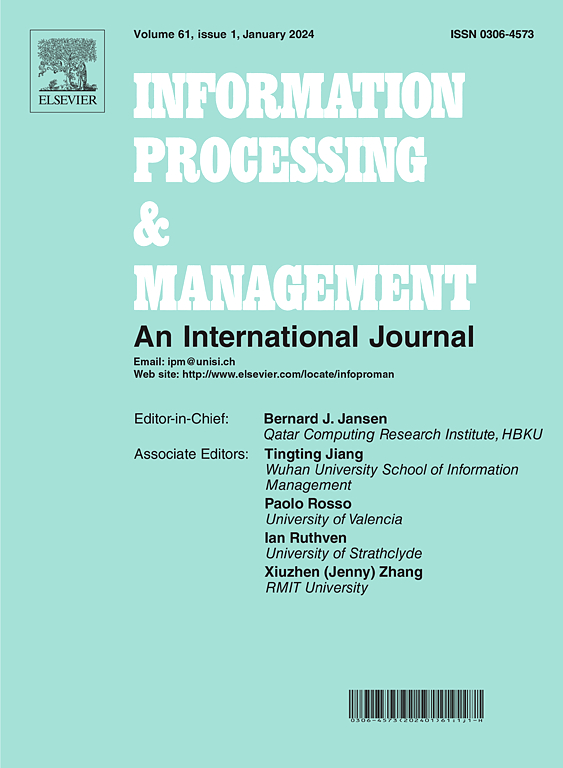DualFLAT: Dual Flat-Lattice Transformer for domain-specific Chinese named entity recognition
IF 7.4
1区 管理学
Q1 COMPUTER SCIENCE, INFORMATION SYSTEMS
引用次数: 0
Abstract
Recently, lexicon-enhanced methods for Chinese Named Entity Recognition (NER) have achieved great success which requires a high-quality lexicon. However, for the domain-specific Chinese NER, it is challenging to obtain such a high-quality lexicon due to the different distribution between the general lexicon and domain-specific data, and the high construction cost of the domain lexicon. To address these challenges, we introduce dual-source lexicons (i.e., a general lexicon and a domain lexicon) to acquire enriched lexical knowledge. Considering that the general lexicon often contains more noise compared to its domain counterparts, we further propose a dual-stream model, Dual Flat-LAttice Transformer (DualFLAT), designed to mitigate the impact of noise originating from the general lexicon while comprehensively harnessing the knowledge contained within the dual-source lexicons. Experimental results on three public domain-specific Chinese NER datasets (i.e., News, Novel and E-commerce) demonstrate that our method consistently outperforms the single-source lexicon-enhanced approaches, achieving state-of-the-art results. Specifically, our proposed DualFLAT model consistently outperforms the baseline FLAT, with an increase of up to 1.52%, 4.84% and 1.34% in F1 score for the News, Novel and E-commerce datasets, respectively.
DualFLAT:用于特定领域中文命名实体识别的双平面-网格变换器
最近,用于中文命名实体识别(NER)的词典增强方法取得了巨大成功,这需要高质量的词典。然而,对于特定领域的中文 NER,由于通用词库和特定领域数据的分布不同,以及领域词库的构建成本较高,要获得这样一个高质量的词库具有挑战性。为了应对这些挑战,我们引入了双源词典(即通用词典和领域词典)来获取丰富的词汇知识。考虑到与领域词库相比,通用词库通常包含更多噪声,我们进一步提出了一种双流模型--双扁平阶梯转换器(Dual Flat-LAttice Transformer,DualFLAT),旨在减轻来自通用词库的噪声的影响,同时全面利用双源词库中包含的知识。在三个公共领域特定中文 NER 数据集(即新闻、小说和电子商务)上的实验结果表明,我们的方法始终优于单源词典增强方法,取得了最先进的结果。具体来说,我们提出的 DualFLAT 模型始终优于基线 FLAT,在新闻、小说和电子商务数据集上的 F1 分数分别提高了 1.52%、4.84% 和 1.34%。
本文章由计算机程序翻译,如有差异,请以英文原文为准。
求助全文
约1分钟内获得全文
求助全文
来源期刊

Information Processing & Management
工程技术-计算机:信息系统
CiteScore
17.00
自引率
11.60%
发文量
276
审稿时长
39 days
期刊介绍:
Information Processing and Management is dedicated to publishing cutting-edge original research at the convergence of computing and information science. Our scope encompasses theory, methods, and applications across various domains, including advertising, business, health, information science, information technology marketing, and social computing.
We aim to cater to the interests of both primary researchers and practitioners by offering an effective platform for the timely dissemination of advanced and topical issues in this interdisciplinary field. The journal places particular emphasis on original research articles, research survey articles, research method articles, and articles addressing critical applications of research. Join us in advancing knowledge and innovation at the intersection of computing and information science.
 求助内容:
求助内容: 应助结果提醒方式:
应助结果提醒方式:


